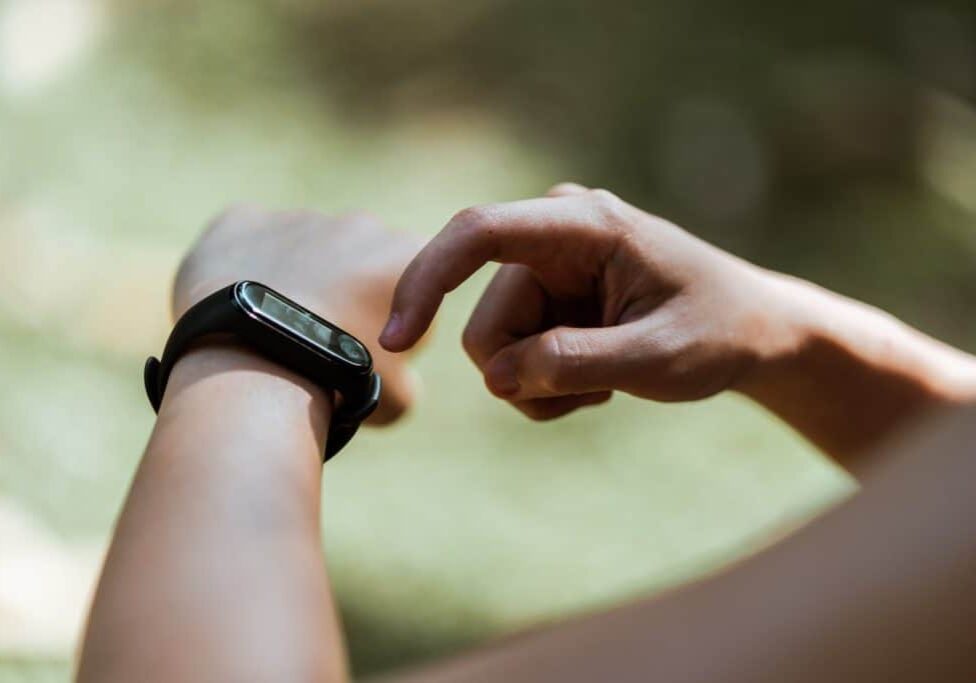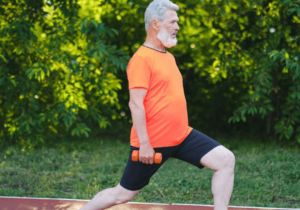Moderate Intensity Training: 4 Surprising Little Ways it will Boost Your Workout Results
What are the 3 levels of exercise intensity?
Have you ever heard of Moderate Intensity Training?
We’re all aware of the healthy benefits of exercise, and we’ve been full on with High Intensity for a while now. Over-the-top highschool-crush obsessed. High intensity everything! Sprints! HIIT (that’s High Intensity Interval Training if you aren’t familiar with the abbreviation) and Tabata classes galore!
I don’t blame us for getting infatuated. When time is the most precious thing we have, the idea of getting an hour’s worth of cardio in 20 min sounds dreeeamy. Doing less exercise for more benefits? Sign. Me. Up.
High intensity is a great tool, AND it shouldn’t be the only type of cardio that you do. Moderate intensity training and Low Intensity cardio give totally different awesome benefits.
Let’s explore why you may want to consider adding some less intense cardio to your week.

Photo by Danila Hamsterman on Unsplash
Why Moderate Intensity?
1. Training should look like your everyday life and favourite activities
Most of what you do in life is low to moderate intensity. For instance, you don’t sprint around the grocery store and then throw your groceries into your cupboards at max force (at least I hope you don’t). You probably don’t sprint up the mountain when you go for a hike either.
It makes sense to spend the most time training for the things we need to be able to do most often, which means a steady or intermittent pace at a modest speed.
2. Moderate intensity training builds self-awareness
Your body is constantly relaying information to your brain and you are, most likely, completely ignoring it. Zero judgment here. Since childhood, you’ve been socialized to tune yourself out and push through, just like the rest of us.
Intentionally paying attention to your energy and pacing in a workout is a great place to start tuning back in:
- Is your heart rate going up or staying steady?
- Are you breathing quickly or slowly? Easy or forced?
- Is tension creeping up into your shoulders?

Photo by Danila Hamsterman on Pexels
Knowing what it feels like to overdo it and be totally gassed vs a cruising pace you can maintain forever is a life skill. Being aware of what it feels like when you START to overdo it and course-correct before you burn out is a huge life skill. Noticing your fatigue and realizing you are under-recovering before it becomes a problem is a huuuuuge life skill.
Basically, you are building your personal stress awareness. And that leads to the next reason...
3. Develop stress management skills
Oh hey! Look at that! One awesome skill leads to another!
This is the big one: Low to moderate intensity cardio provides direct access to your parasympathetic nervous system.
For an extremely brief summary, the sympathetic branch of your nervous system is the fight, flight, or freeze portion. In contrast, the parasympathetic branch is the rest, digest, and recover portion of your nervous system. In effect, only one branch is "in charge" at any given time.
A healthy nervous system has short episodes of sympathetic activation and then the parasympathetic kicks in to calm you down and help you recover. On the other hand, staying in fight-flight mode is what we call chronic stress, which blocks that recovery cycle from happening.
Having tools, such as moderate intensity cardio, to return yourself to a parasympathetic state is pure gold when it comes to keeping your nervous system happy and reducing overall stress.
4. It gives you superpowers
Low to moderate intensity cardio can help you live long and prosper, and who wouldn’t want that?!
Your heart beefs up its pumping abilities, which decreases your resting heart rate, reducing your risk of all sorts of diseases and health problems.
Managing your stress and having an efficient blood pumper means you heal and recover faster. In particular, your body will legit make more tiny blood vessels to get nutrients through your body faster. Amazing.
Oh, AND it boosts mental health. You’re basically a health ninja. Feel that power?! That’s all you, friend!

Photo by Danila Hamsterman on Pexels
How often should you do Low to Moderate Intensity?
The more often the better! Most health authorities, such as the CDC, recommend 30 min of low to moderate intensity activity 5 days per week.
If that sounds daunting, remember that the healthy benefits of exercise, mentally and physically, start to accumulate immediately, and not only at the “ideal” number. I often have clients start at 15 minutes, or even 5 minutes, on two or three days of the week.
Start with what fits into your life, and what you can consistently do, so it becomes part of your regular routine.
How to do a Moderate Intensity workout?
First, pick your cardio. If you have a cardio activity that you already love, such as running or cycling, feel free to do that (or a combination of them). If you don’t have a preferred cardio activity, or simply need some rainy day options, select a few bodyweight or light weight exercises to do as a circuit.
I’ve included two example workouts below to help you get started. Both use the same 4 beginner-friendly movements, but you can swap in almost any exercise.
Option One is continuous cardio
Continuous cardio means that you keep a steady pace for 30 to 90 min.
- If you have a heart rate monitor, aim to stay between 110-150 beats per minute (bpm).
- If you don’t have a monitor, stay at a level where you can still mostly breathe through your nose.
Leading conditioning expert Joel Jamieson calls this method Cardiac Output, and it’s the one that makes your heart a more efficient pumper!
Example workout: Let’s go steady
Suggested warm-up: Take 5 full, deep breaths to transition out of your day. Go through 5-10 reps of each exercise to get familiar with the movements and check in with how the movements feel for you.
Set a timer for 15 or more minutes.
Do 10 reps of each exercise (both sides!), and repeat until the time is up.
- Half jacks
- Plank Step Outs
- Boxer Skips (no rope)
- Slow mountain climbers
Option Two is moderate intensity intervals
Moderate intensity intervals, which Joel Jamieson calls Tempo Intervals is a style of workout helps you recover from effort quickly and increase your capillary network. (These are really small blood vessels that take oxygen and nutrients straight to your muscles.)
For these, you’ll want an interval timer app on your phone. Set it for 10 seconds of exercise followed by 60 seconds of rest for 8 to 20 rounds (depending on how much time you want to train for). The 10 seconds of exercise should be at 70% effort. Think about what your 100% would feel like and then dial it back to 70%.
It’s important not to go too intense, because the moderate intensity is what makes it a recovery workout versus a workout you have to recover from. You should not be exhausted at the end of this workout!
Example workout: On Again Off Again
Suggested warm-up: Take 5 full, deep breaths to transition out of your day. Go through 5-10 reps of each exercise to get familiar with the movements and check in with how the movements feel
Set your interval timer* for 8 to 16 rounds of 10 seconds on, then 50 seconds rest.
On each 10 second interval, do one exercise at 70% effort.
During the rest period, focus on a long exhale to slow your heart rate as much as possible between rounds. You can do some gentle movement, like slow walking or walking on the spot, OR simply focus on your breathing.
Rotate through the exercises until your intervals are complete:
- Half jacks
- Plank Step Outs
- Boxer Skips (+/- a rope)
- Slow mountain climbers
Give one of these workout techniques a shot on a day where you could use some recovery or combine it with a moderate weight workout and see how it feels!
Health Ninja Jeanette Marcotte is a health coach and professional geologist, who is obsessed with helping fellow professional women reclaim their time and energy by weaving healthy choices into their daily lives.
When she is not coaching or looking at rocks, you can find her hanging out in her garden with her dog, collecting new hobbies, and/or reading far too many books at once.
Find other articles written by Jeanette on her coach profile. Hang around for mindset strategies and micro-habits that will transform your health & confidence so that you feel like a Health Ninja, too!





